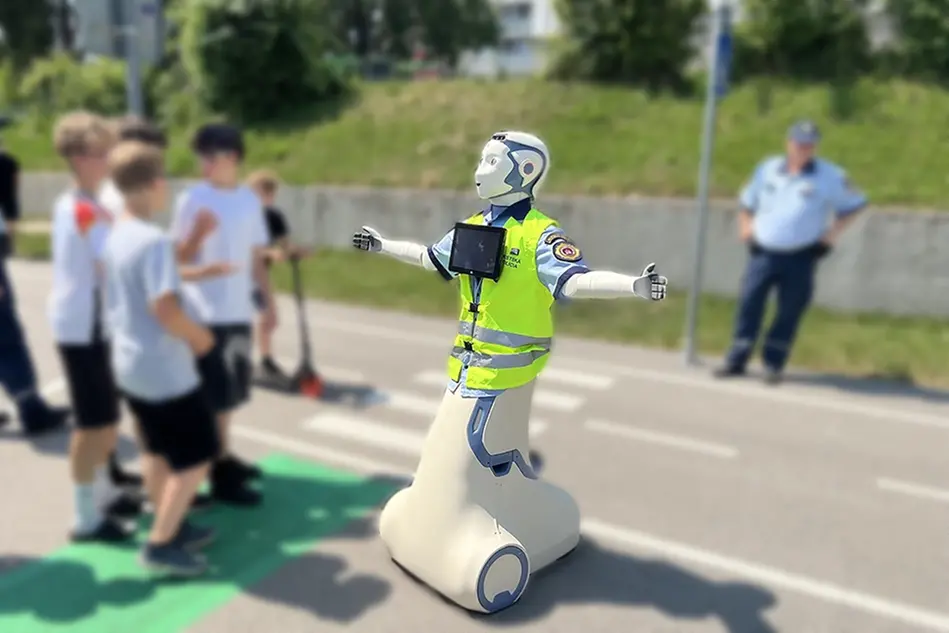Humanoid robot tested for safer traffic
Earlier this month, researchers from Halmstad University, the Karlsruhe Institute of Technology, Germany, and the Slovak University of Technology in Bratislava, Slovakia tested how elementary school students react to a so called traffic robot – a humanoid robot that is supposed to ensure the safe crossing of children across the road in front of schools.
Humanoid robots have enormous potential to connect the world of people and the world of machines – they can both communicate with pedestrians, cyclists and drivers in a humanistic way with gestures and natural language, as well as with automated vehicles using standard wireless communication technologies. Another advantage of humanoid robots is that they constantly can monitor 360 degrees of their surroundings and never lose focus on their tasks.
“However, the key question is how people across different age groups will react to the presence of humanoid robots on the roads. This is the aspect we tested today with colleagues from Halmstad University in Sweden, KIT Karlsruhe in Germany and the University of Liechtenstein”, explains Nina Masaryková, a PhD student from the Slovak University of Technology.

The traffic robot testing was done by the Bratislava City Police in cooperation with an elementary school in Slovakia.

Alexey Vinel, Professor.
The principal investigator of these activities is Professor Alexey Vinel, Professor at Halmstad University in Sweden and leader of the Cooperative Autonomous Systems group at KIT Karlsruhe in Germany. This research includes input from other academic and industrial European partners, with consortia being established aiming to important research activities within the Horizon Europe framework.
A step towards a safer future
The traffic robot testing on the playground was done by the Bratislava City Police in cooperation with the Karloveská 61 Elementary School in Slovakia.
“At the Slovak University of Technology, we believe that our responsibility lies not only in education and research, but also in the transfer of innovations into practice. The testing of a humanoid robot in urban traffic – although for now in a simulated traffic playground environment – represents a step towards safer, technologically supported mobility of the future. Robots have the potential to significantly increase the safety of vulnerable road users. However, how people accept them is equally important. This is precisely why we emphasise interdisciplinary research that connects artificial intelligence, robotics, user experience and social perception”, said Dean Ivan Kotuliak.
The result of the testing is the collected feedback from students from different year groups regarding their interaction with the robot, as well as recorded sensory and telemetric data, which will be further processed as part of ongoing research activities.
Text and photo: Slovak University of Technology
Portrait: Kristina Rörström


